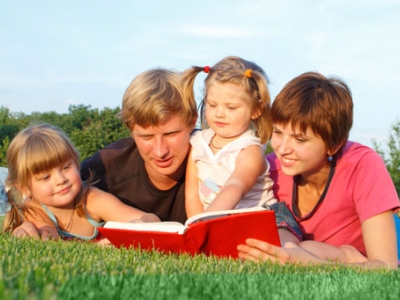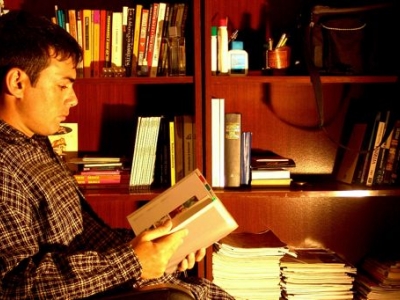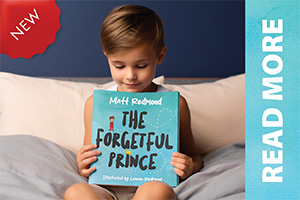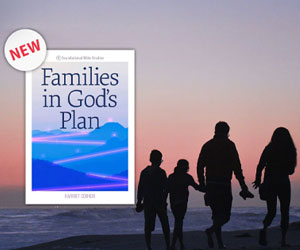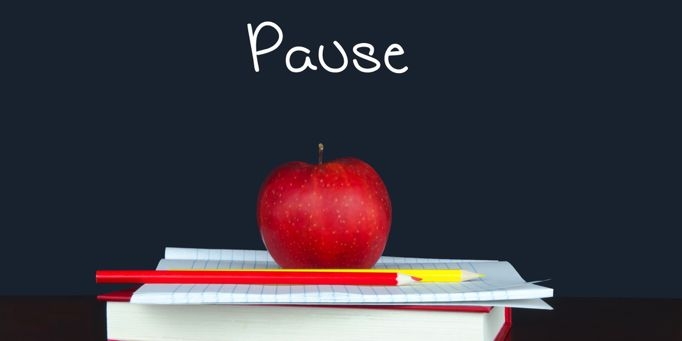
Reading with pauses
Will Graves discovers the benefits of stopping and chatting in the middle of a children's book.
Reading to our children is one of my favourite activities, and one we’ve enjoyed for almost as long as we’ve had children. I’d love to say that we read to them from the very beginning, but apart from me reading the Preface to the NIV to our first child in utero (so she would know her father’s voice), it would not be true. But I digress ...
One of my little peculiarities is that I like too many things to be 'just so' and done the 'correct' way. This means too many things in my life are black and white. When I initially started reading books with our children, I would read them word for word, page to page, in the exact order as prescribed by the author/publisher. I have found myself doing this particularly whilst we are teaching the children to read for themselves. They can follow the words as I read them, and in this way I hope I am helping them learn to read.
Should we be reading this?
However, as our children get older, we are coming across books that contain situations and characters that are not as lovely or godly as we would like them to be. For example, the cheeky but actually violent and often very unkind Brer Rabbit, Fox and Bear of Enid Blyton’s books. The reading level is good for our oldest child, however the material is potentially influential in an undesirable way, and difficult for a young person to judge. The basic premise of the multiple stories appears to be Brer Fox or Brer Bear attempting to trap Brer Rabbit, or Brer Rabbit trying to get one over on his two foes. We’ve also started reading The Secret Garden, which commences with a young girl who is not displaying many of the fruits of the Spirit.
We have a number of options in addressing these potentially bad influences on our children.
- We could stop reading altogether and encourage other activities (helping more around the house, going outside, playing games).
- We could restrict the books that arrive in the house and filter whatever comes home from the school library, or that arrives as a generous gift, ensuring that only “nice” books come in.
- We could teach our children to critique the characters and how they deal with situations.
One of the benefits of reading with children is that you can control the pace. You can pause and reflect with a book in a way that is much less easy with a TV or a movie (unless you’ve got some whizzy gadget TV and a pretty patient child!!). It's even more difficult in a real life situation, where emotions may be running high.
Pressing pause
It has been wonderful to be part of a conversation with our children that moves into more adult topics. It is one of my current joys of parenting. I am now really loving not reading word for word, but rather pausing every now and then to ask a few simple questions.
- “What is a different way that Mary could act?”
- “Is it right that just because Brer Fox is trying to hurt Brer Rabbit that Brer Rabbit should say something that is not true?”
- “How would it make you feel if someone did that to you?”
- “Do you think your friends would like it if you were like that?”
It does not have to be just the less-than-godly reactions that you can dwell on. Plenty of the books you read will contain lovely material that can be used positively too.
This critiquing and commenting on situations is one that Growing Faith’s Mark Hadley has inspired me in, and has been a lot of fun to do. I would encourage any of you who are black and white people like me to give it a go! It is also important for those of us who are falling into the temptation of rushing the bedtime routine and the story so you can get onto spending time on, let’s be honest, watching tv or other less important activities.
For more articles from Growing Faith, subscribe to our monthly e-newsletter.
To hear about the latest books and resources from Youthworks Media, subscribe here.


